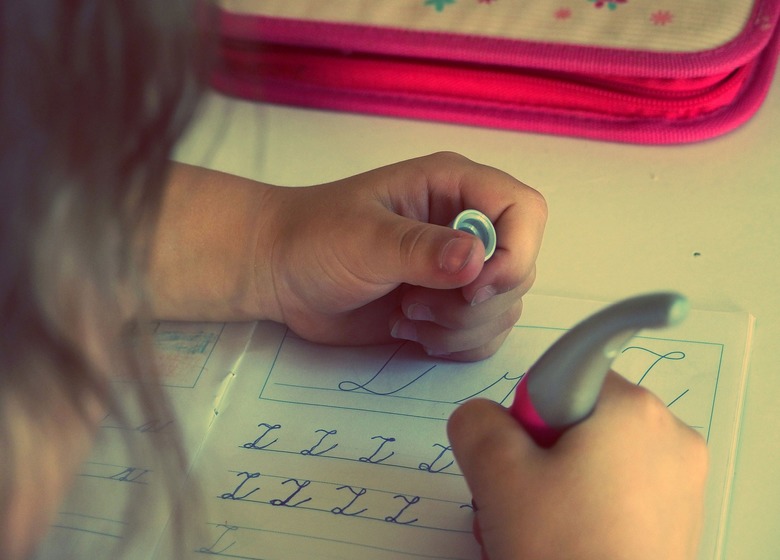While some children are more talented to compose, most of them are average and able to write their thoughts in a coherent way. But then there are those who even do that seem to have a lot of trouble. Such kids can suffer from something known as Dysgraphia.
What is Dysgraphia?
Dysgraphia can be defined as a learning disability where it is difficult for children to write and sometimes with other fine motor skills. Dysgraphia and ADHD often go hand in hand, but it can also be a disorder on its own. It is also called “Specific Learning Disorder with Impairment in Writing.”
Causes Of Dysgraphia in Kids
It is important to understand what causes children to suffer from dysgraphia so that they can interact with them and help them. Several causes of dysgraphia in kids are as follows:
- Inability to interpret letters and words correctly
- Underdeveloped fine motor skills
- Damage of the brain
- Multiple mental images
Symptoms of Dysgraphia in Kids
Look out for these signs if you suspect your child may have dysgraphia. Here are the most important symptoms of dysgraphia in kids:
- Inability to spell correctly and combines letters in the upper and lower case
- Has trouble staying in the margins
- An uncomfortable and tight grip on the pencil and awkward position of the body
- Has trouble alternating between words and creating the shapes of the letters
- Unable to pay proper attention.
- Has difficulty with other fine motor skills like holding a fork, tying laces or fastening buttons.
- Difficult to hold the pencil correctly or to use scissors in the correct way.
Types of Dysgraphia in Kids
There are various types of dysgraphia, and most kids have more than one form of dysgraphia. Five forms of dysgraphia are here:
1. Spatial Dysgraphia
When a child doesn’t understand the concept of spatial space, and he or she finds it hard to space between words and write on lines it is said that he or she has spatial dysgraphia. Their written and copied works spontaneously can not be read, but their spelling is generally natural.
2. Phonological Dyslexia
It is said that phonological dysgraphia is the inability to spell unfamiliar words and phonetically irregular phrases. Children with this form of dysgraphia are unable to identify phonemes and use them in writing correctly.
3. Dyslexic Dysgraphia
Children with dysgraphia dyslexia are often able to copy correctly, but they can write randomly and their spelling is not perfect.
4. Lexical Dysgraphia
This form is quite uncommon in children and is seen when the child may spell but they depend more on the regular patterns of sound-to-letter.
5. Motor Dysgraphia
Handwriting is often illegible in this form of dysgraphia as the child is unable to hold a pencil properly.
Diagnosis of Dysgraphia in Kids
When you think your child has signs of dysgraphia, consider seeking a psychiatrist or neurologist’s opinion as they are qualified to diagnose dysgraphia. The doctor will need some background information about the family history of the infant, developmental milestones, and some academic history including writing the child’s samples.
The child will also have to undergo a dysgraphia assessment which involves certain tasks in which the evaluator will assess his fine motor skills, intellect and academic achievement. Letter forming and other types of motor-related dysgraphia may be diagnosed at the age of six, but most of them wait until the child reaches the age of nine or so before making a proper diagnosis, as the Test of Written Language can only be done by children who are more familiar with complex writing styles.
Treatment of Dysgraphia In Kids
Dysgraphia has no remedy, so the care may vary from child to child. It will also differ if the child has any other form of learning disability or any kind of health problem. Here are some ways in which dysgraphia can be treated in children:
- Those who struggle with the motor skills they need to write will undergo occupational therapy. There, therapists are working on the power of the hand and the fine motor control that the child will need to be able to write. These also help children learn how to position their arms correctly and how to balance their bodies.
- Educational counseling will work wonders to help children with other writing-related issues. There, they can learn how to work with writing around their limitations and help kids set realistic and achievable goals for writing, as well as show them how to track their progress using visual resources. It helps children with as little pressure as possible to cope with writing assignments.
While it may be frustrating for both the child and the parent, it is important not to let the child lose self-confidence. Do not be afraid to ask for help if your attempts to help your child develop at home are not effective, because the success of your family depends on the ability of your child to have adequate trust. You can overcome this problem together.
Also Read: Tips To Improve Your Child’s Handwriting













